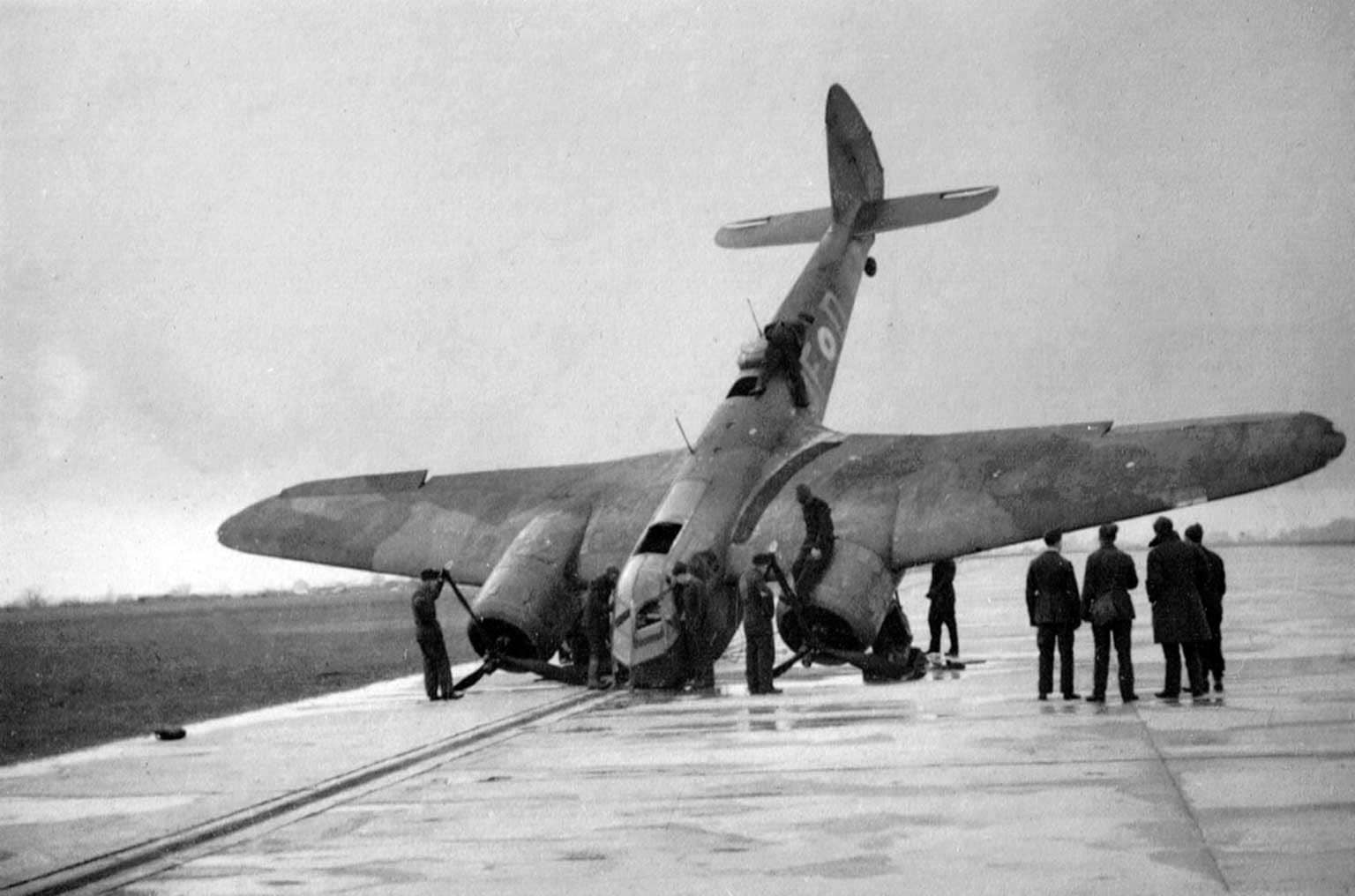British two-engine bomber Bristol Blenheim after an unsuccessful landing. Tangmere Air Base in the UK. Battle of Britain, Western Front, World War II in Europe.
The Bristol Blenheim military photo source: 601diary.wordpress.com.
Location: Tangmere, UK
Photo taken time: 1940
Bristol Blenheim
Bristol Blenheim, (the name of the famous battle during the War of the Spanish Succession) was a British high-speed light bomber.
The aircraft was developed by the Bristol Airplane Company in the mid-1930s based on the design of the Bristol 142 aircraft.
Initially, the prototype of “Bristol Blenheim” bomber was designed by the chief designer of Bristol, Frank Barnwell, as a twin-engine passenger aircraft. The project included all the aviation innovations of that time. The project was financed in part by the newspaper tycoon Lord Rosermere, who intended to organize a network of high-speed airlines between the cities of Europe.
Work on the project, called “Type 142” began in April 1934. At the same time, the Bristol firm, on its own initiative, in private, began work on the creation of a military version of the aircraft, called the Type 143.
On April 12, 1935, the Type 142 prototype made its first flight. The first flights showed that the flight characteristics of the new aircraft were much higher than calculated. Naturally, the aircraft aroused the interest of the Air Ministry and they turned to Lord Rosemere with a request to lease the Type 142 prototype for testing by the Air Force. In response, the lord donated one copy of the aircraft to military aviators.
Flight tests showed that with the maximum load, the Bristol Blenheim developed a speed of 80 km / h higher than the latest Gladiator fighter. The British Air Ministry in August 1935 developed a technical assignment for the creation of a three-seater high-speed bomber based on the Type 142.
In accordance with the terms of reference, the civilian “Type 142” was finalized: the wing was raised to accommodate the bomb bay – the aircraft became medium-wing, the tail was enlarged, the airframe design was strengthened, the design of the cockpit was changed, defensive weapons and gunners were added.
In September 1935, Bristol received the first serial order (without building prototypes) for the construction of 150 aircraft for the Royal Air Force. The aircraft received the designation “Blenheim” Mk.I. The first Blenheim Mk.I rolled off the assembly line was used for further development of the aircraft and for flight testing.
Based on the results of the tests, the Ministry of Aviation decided to start mass production of Blenheim Mk.I bombers and issued an additional contract to Bristol for the construction of 434 aircraft. The new contract stipulated permission for the Bristol company, after fulfilling the orders of the British Air Force, to conclude contracts for the supply of the Bristol Blenheim bombers to the governments of countries friendly to Great Britain.
